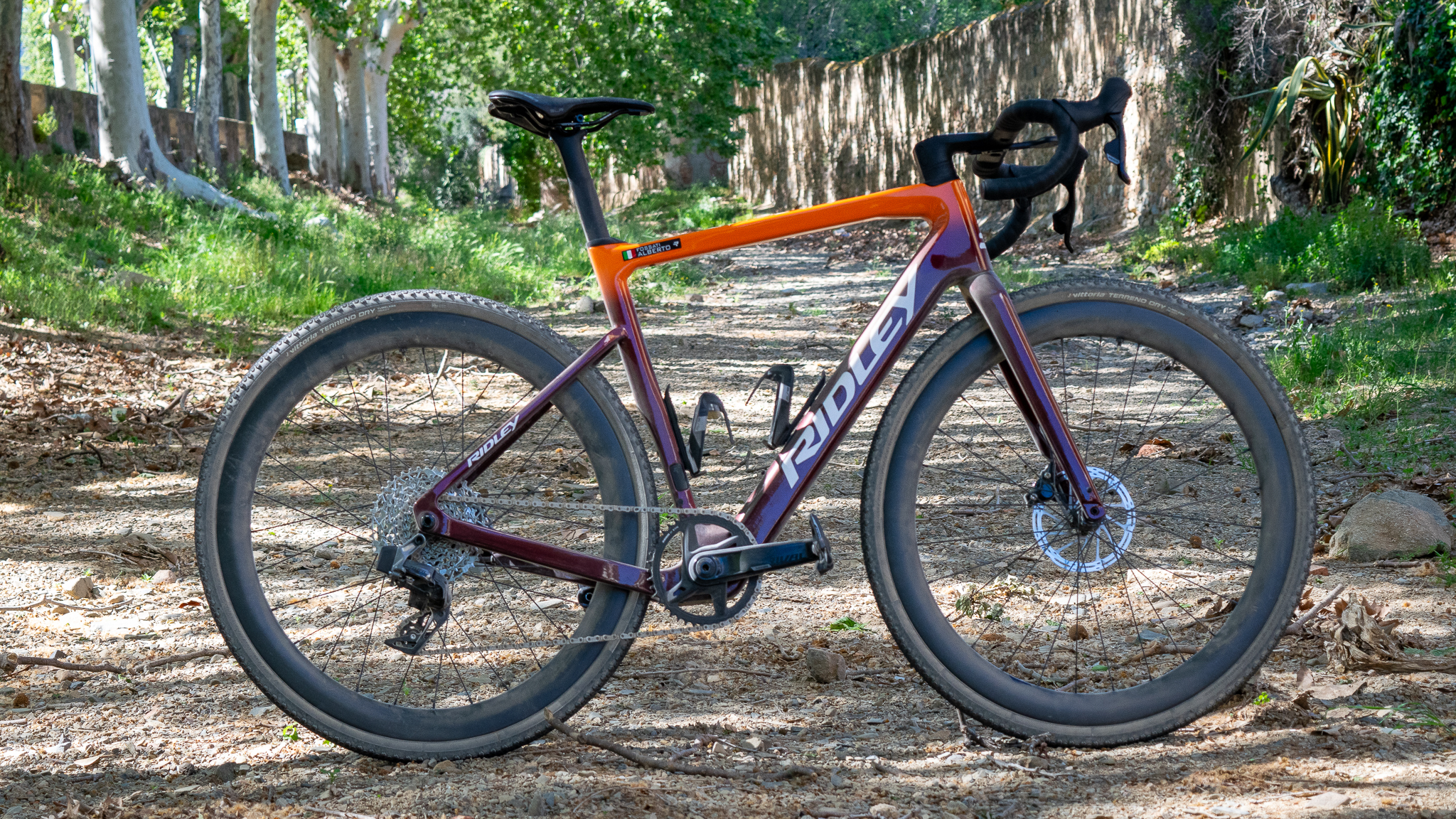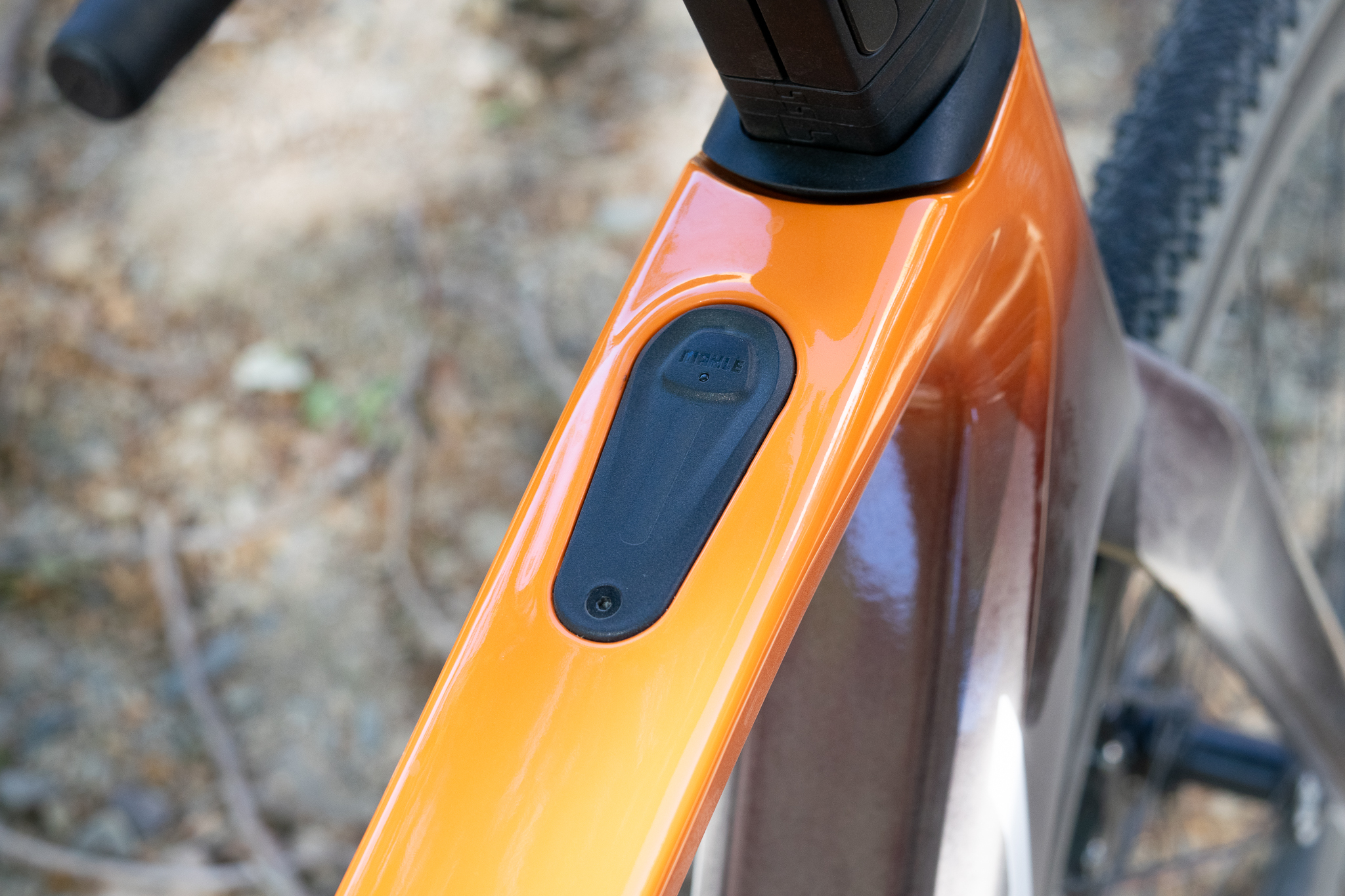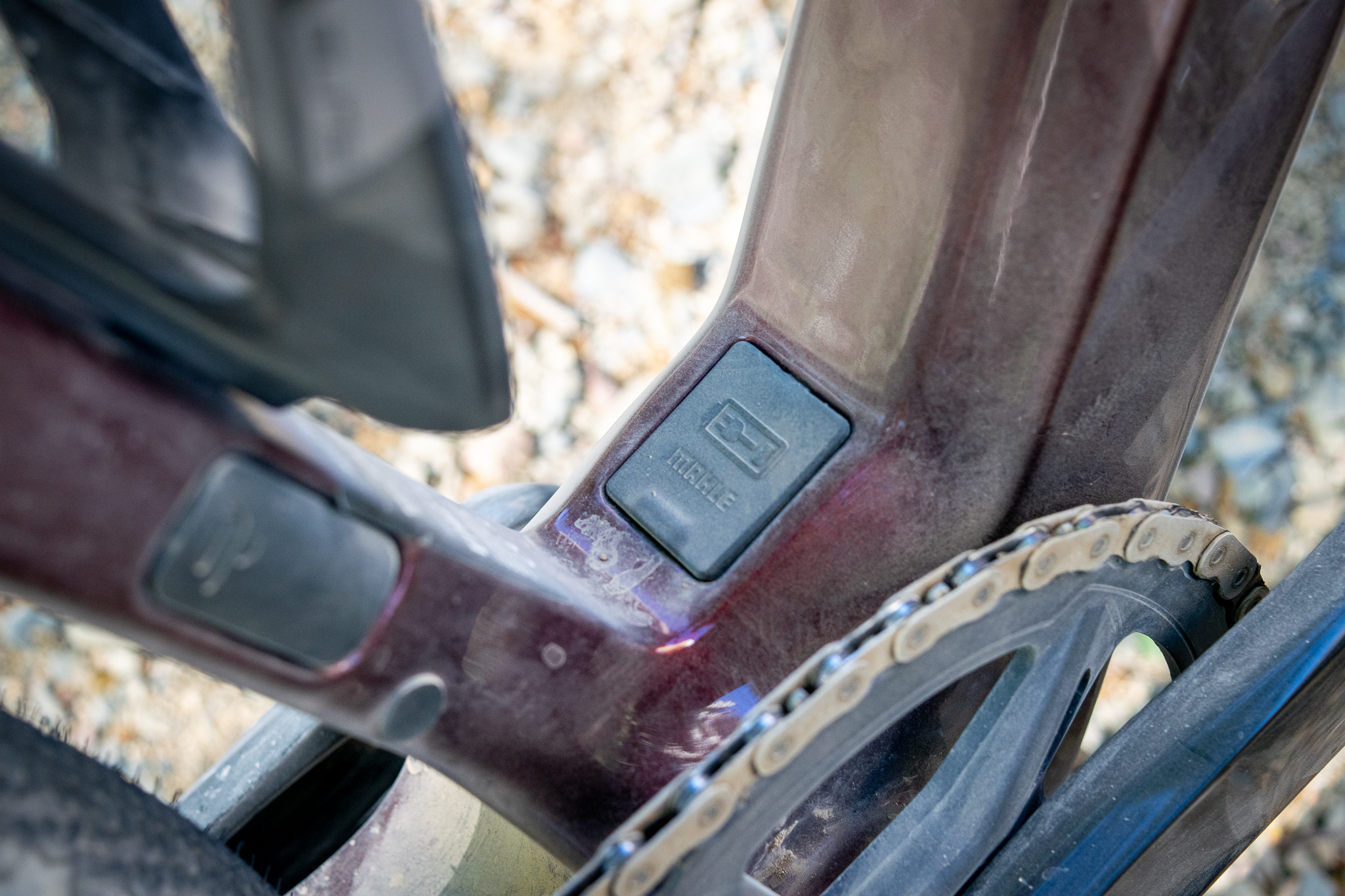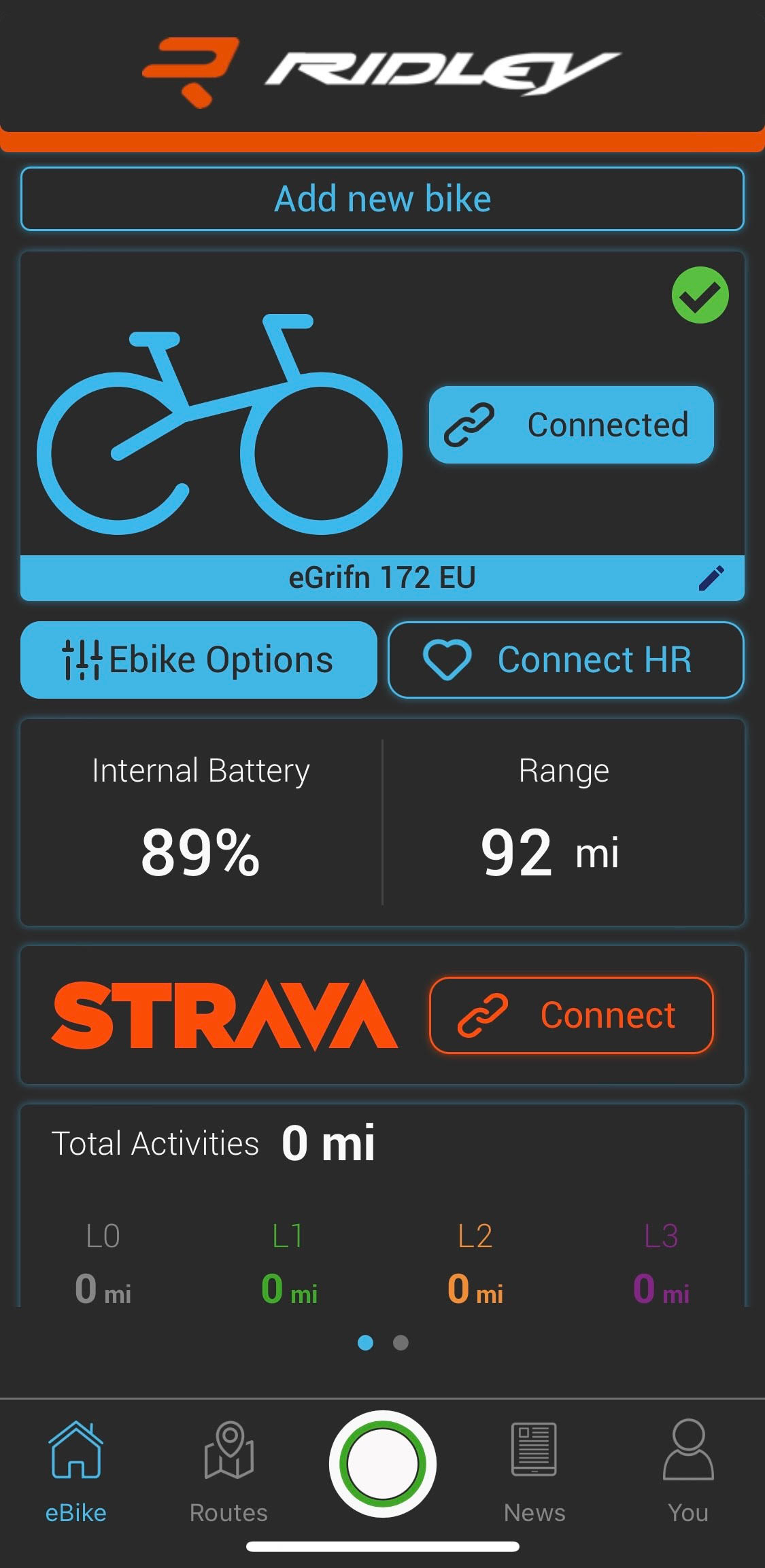
Ridley has expanded its Grifn all-road model range with the addition of three new models. One of these is the new E-Grifn electric bike which sits alongside the Grifn RS and Grifn A.
Cyclingnews attended the Grifn RS and E-Grifn launch recently. You can read a full breakdown regarding the new bikes in our news piece, as well as my first ride review of the Grifn RS.
It seems Ridley wants to keep things pretty natural feeling with the new E-Grifn, its first e-bike. The brand thinks the E-all-road bike was the right category to launch its first e-bike in for them, slotting into a freer space within the saturated e-bike and e-MTB market.
In short, Ridley didn't want an e-bike that felt like a motorbike. This is a nimble, more natural-feeling lightweight e-bike bike that provides electronic assistance but retains the Grifn ride feel and DNA. It uses the Mahle X20 drive system which features a custom tuning for the E-Grifn. I was able to test the E-Grifn in both road and gravel setups, the same as I did for the Grifn RS at the launch of the new Grifn models in Spain last month.
The E-Grifn will be available in three road configurations and four gravel guises. Prices start at €5,499 and run through to €7,999. Road and gravel options are available with carbon wheels from Forza and DT Swiss and a mix of electronic and mechanical Shimano and Sram groupsets.

Design and Aesthetics

I really liked the look of my Grifn RS road and gravel bikes. The downtube is one of the most slender I've seen on an e-gravel or road e-bike. Certainly more slender than the Specialized Turbo Creo 2 I tested last year and it ties into the subtle overall e-aesthetics. I wouldn't be surprised if the fact this is an e-bike went completely unnoticed by some rider's if this bike was amongst a group of bikes. This isn't to say there's a need for e-bikes to not look like e-bikes (I refuse to say acoustic bikes, folks), there's absolutely nothing wrong with it. But it's a testament to what can now be achieved with drop bar e-bike builds, they can look very clean and unobtrusive.
So to the E-Grifn, you get the same geometry, but a few details change on the frame due to the inclusion of certain e-features. The top tube and down tube mounts are removed, due to I believe the inclusion of the down tube mounted battery and top tube mounted control unit. You can run a 1x or 2x drivetrain setup in electric and mechanical and can also still fit mudguards, a handy option.
Electronics-wise, as mentioned the battery is mounted in the down tube, and there's a control unit in the top tube which you use to turn the system on, toggle modes and check battery life. It also features machine learning and AI technology to adapt to the rider over time. Then there are handlebar-mounted e-Shifters which allow you to scroll through modes, I found myself using these most of the time. Think Shimano sprint or Sram blip shifters but for your e-modes.
The drive unit which takes the place of the rear wheel's hub is wireless thanks to the AMC - automatic motor connection - which means a clean look, and no plugs or wires. The hub engages with a 'plug' on the non-drive side dropout which is easily achieved. The hub is compatible with all freewheels and groupsets up to 13 speeds. Mahle also offers a front hub to keep things matching, which I really like. Purely for the fact they have taken the trouble to ensure riders' hubs will match up. It's a small detail but tells you a little bit about the brand.

At the launch event, Ridley explained that it 'didn't want a motorcycle'. In simple terms, it didn't want to end up with an e-bike that felt like it was taking you for a ride. This can be the case on some drop bar e-bikes, especially when in turbo mode. The goal for the E-Grifn I believe is for riders to still feel like they are making an effort when riding the bikes.
I tested an E-Grifn in gravel form which featured a Rival AXS 1x12 drivetrain, Forza carbon wheels and 35mm Terreno Dry Endurance tyres. This bike also featured the same Forza Cirrus Pro integrated handlebar as on the Grifn RS and I got along with it well.
My roadgoing E-Grifn test bike featured an almost identical setup but instead was built up with an Ultegra di2 groupset and used 28mm Corsa Pro tyres.

Performance
The Grifn offered solid performance in the time I spent riding it and I quickly got the impression that it's a very capable all-road bike. I've discussed this part of the platform in my Grifn RS first ride review so will focus on the more e-specific characteristics here.
To kick off, pairing my bike with the Mahle app, linking my Strava account and even pairing my heart rate monitor were all done smoothly and quickly. The most time-consuming part was working out which was my bike on the app as I was surrounded by Grifn e-bikes all popping up in the list. The app offers map customisation for varying terrains and a lot of analysis, though I didn't have enough time to explore everything I've included a few screenshots below.
In the bike presentation, the feel of the X20 system was described as 'like someone is pushing you from behind' and I think I'd agree with this. In my time riding the bike I found the system to provide assistance in a smooth, supportive way. It's particularly smooth on the road riding in a group and a little more noticeable riding off-road. Accelerating out of a slow gravel turn, for instance, you feel the system kick in and help you out, which puts a smile on your face, but on the road with less spiky accelerations, unless you're really going for it or accelerating from very slow speed, things are very smooth.
Indeed it was disarming at times, especially riding in a group with others on e-bikes. It was hard to notice the assistance at times such was its smoothness until I turned my system off riding with a rider on a standard road bike uphill. Then the effort is brought home to you. If you want an e-road, or gravel bike but still want it to feel like a regular road bike and for the electronic assistance to not drown your effort out, you will like the X20 system.

I'm testing a burlier, more aggressive e-gravel bike at the moment and when riding at 15.5mph + without motor assistance (the limit in the UK) I do feel a little drag and the extra weight. I can't say I felt this as much on the E-Grifn, particularly on the road. It brings me back to that word again; Natural. On flat sections of road carrying speed off a descent, our riding group were all riding at speed, over the system assistance limit and it was hard to feel much extra drag from the system holding you back.
On the road, my bike was equipped with 160mm discs and I achieved far faster speeds on the downhills than on our gravel ride. I felt it took just a fraction longer to start slowing the bike down due to the extra weight and thought if there was an option or the ability to fit 180mm discs I would probably look into it. I may have felt this more keenly due to riding four different bikes back to back in a short space of time but it did stand out for me.
Elsewhere neither bike put a step wrong in the time I spent riding them. Shifting was predictable and smooth from both Shimano and Sram groupsets and everything worked as it should. I rode a small E-Grifn off-road and a size Medium on the road simply due to the bikes that were available and who was riding what. The small fitted me better and serves as a reminder that if bikes come with an integrated bar and stem it will pay to do your sizing homework. Consult your local dealer or the brand if you need assistance as potentially having to swap bars and stems further down the line will be a bit more involved and potentially costly, though the Ridley custom configurator does offer some sizing options.



Early Verdict
After a ride apiece on the road and gravel versions of the E-Grifn I felt it was one of the most natural feeling e-bikes I have ridden and this seems to be in keeping with what Ridley wants for the bike.
The bike looks, for want of a better word, 'normal' at a distance. I think most riders would struggle to spot it was an e-bike, not that that's a bad thing. But it certainly helps retain the drop bar aesthetic.
Natural is the word I would use to describe the power delivery provided by the Mahle X20 system. It's definitely there when you need it but doesn't overpower the overall ride experience.
The Grifn is a really capable platform and the addition of an e-motor system now opens it up to riders who need some additional assistance or who just want to have fun on an e-bike.







